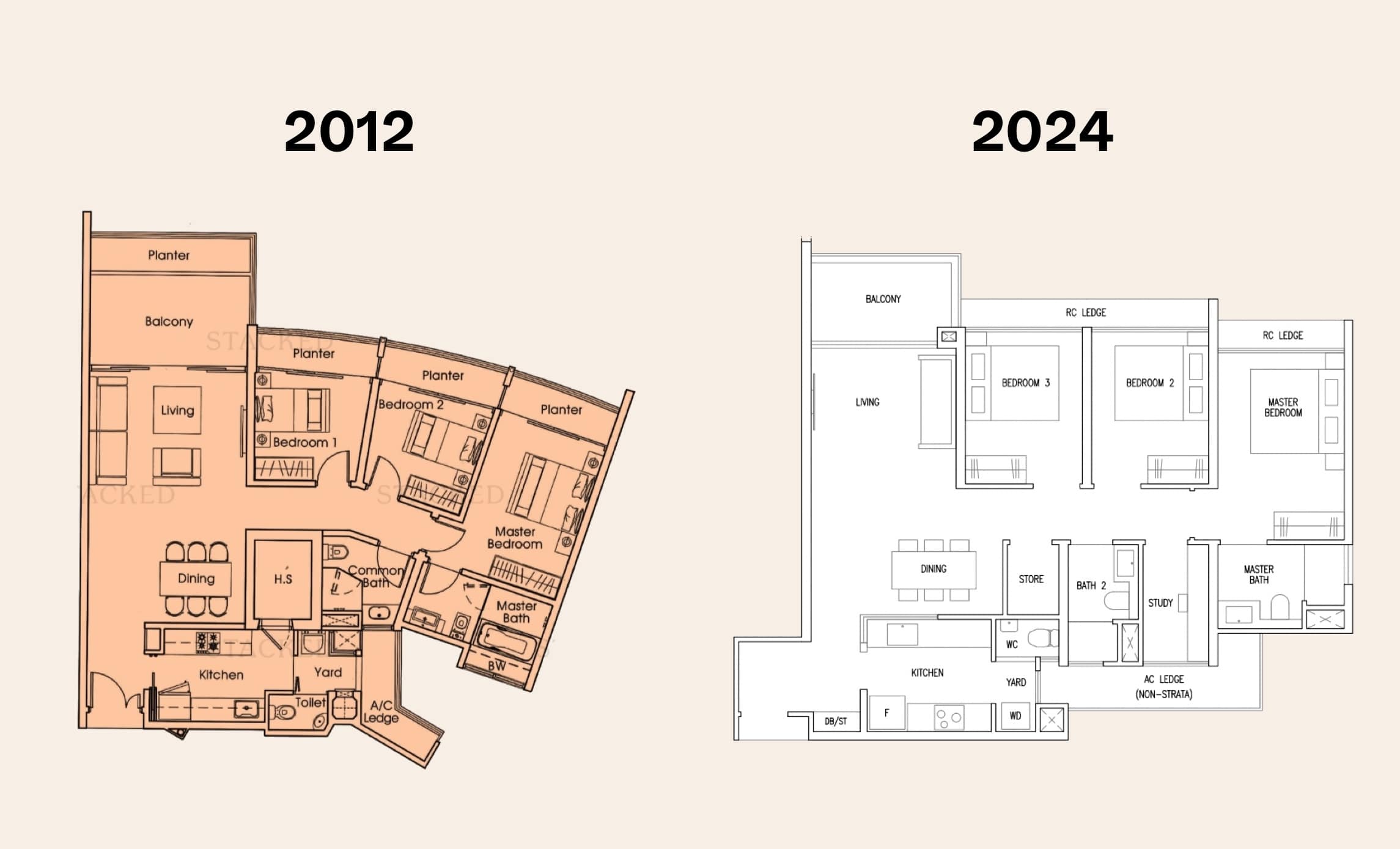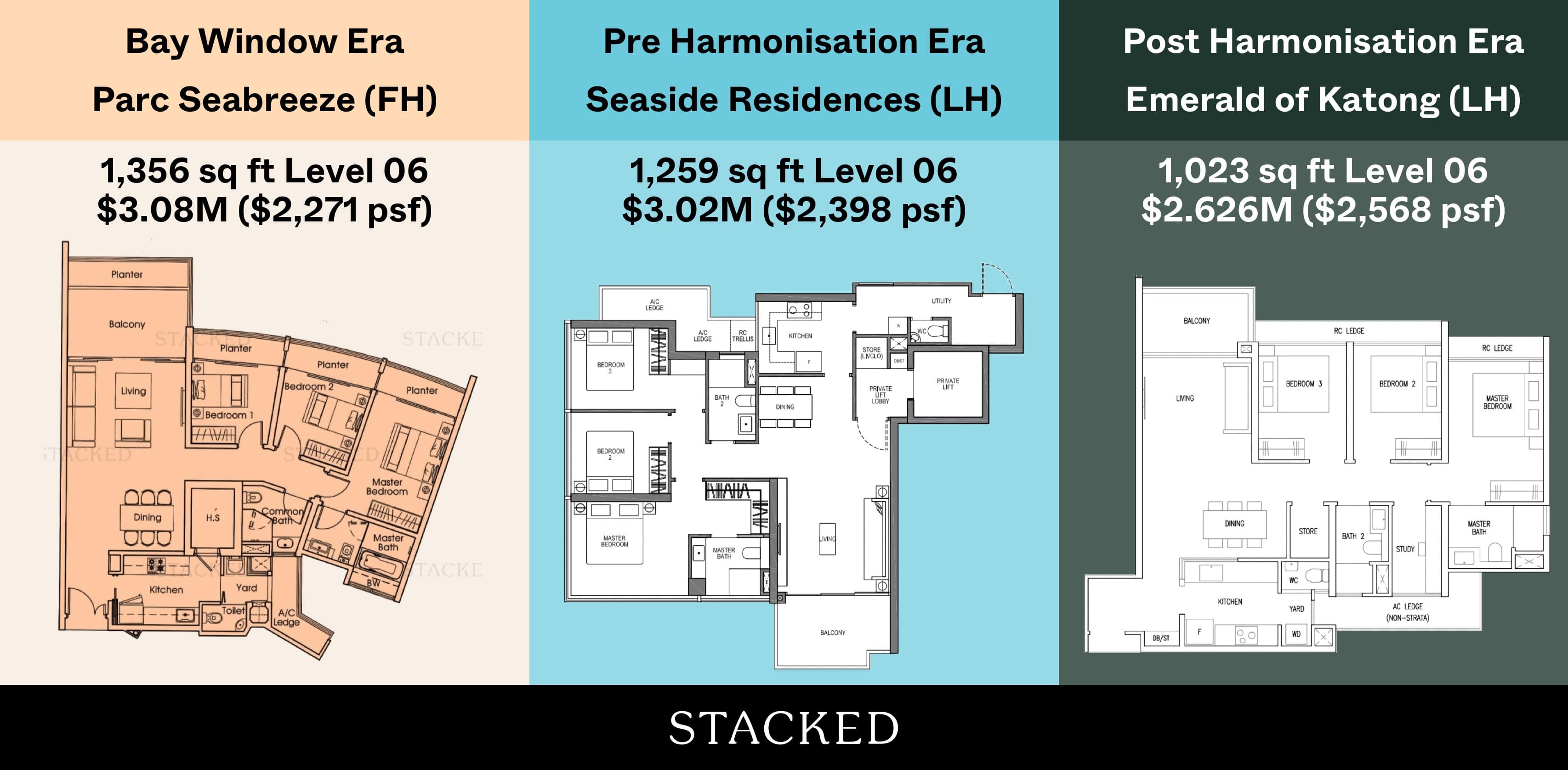Is PSF Still Relevant In The Singapore Property Market? Why Price Per Square Foot Could Be Misleading in 2024

Get The Property Insights Serious Buyers Read First: Join 50,000+ readers who rely on our weekly breakdowns of Singapore’s property market.
A seasoned content strategist with over 17 years in the real estate and financial journalism sectors, Ryan has built a reputation for transforming complex industry jargon into accessible knowledge. With a track record of writing and editing for leading financial platforms and publications, Ryan's expertise has been recognised across various media outlets. His role as a former content editor for 99.co and a co-host for CNA 938's Open House programme underscores his commitment to providing valuable insights into the property market.
Price Per Square Foot (PSF) is a time-honoured way of comparing prices in the property market; but along the way, it became far too intertwined with notions of value. It’s just an easy, intuitive way to think: if two properties are the same size, but one has a lower price psf, that must be “better value.” Easily done. But the property market in Singapore has changed a lot over the years, and today, this sort of assumption is often way off and causes price psf to become more misleading than helpful. Here’s why you might not want to read so much into it these days:
What makes the price PSF an increasingly poor indicator?
To understand why the price PSF isn’t very helpful today when it comes to comparing properties across time periods, you need to know more about how certain regulations have shaped the market.
One of which was the 2010s bay window/planter era, which you can read more about here. At that time, developers didn’t have to pay for air-con ledges/bay windows/planters, which they exploited liberally throughout the floor plan (but you, the homeowner had to pay for it).
This rule was eradicated later, and you can see the period after when floor plans started to get much more efficient.
Recently, the GFA harmonisation rule was introduced, and that has led to the most efficient floor plan possible, as buyers now don’t pay for AC ledges or air space.

As such, even though the price per square foot may be higher, the eventual quantum may end up being the same.
Here’s an example of how if you were to compare solely by psf across three similar 3-bedder properties in the East, you would end up with a very distorted picture:

When you couple this with potentially higher renovation costs, and a tendency to be less efficient, price psf becomes a poor point of comparison. The lower price psf may no longer reflect real value differences. So once you’re comparing against a condo that’s over a decade older, it’s best to focus less on price psf.
Price psf also ignores certain risks inherent to older properties, such as looming en-bloc sales, or aging facilities that are in tatters.
(All of this is true for HDB properties as well)
Besides this, here are a couple more reasons why you shouldn’t compare solely by psf today.
No qualitative depth
If a property has a higher price psf, there may be a good reason for it.
A newer condo is a good example: its higher price psf might look expensive compared to an older resale condo. But once you factor in the cost of renovation (older condos tend to need more work), you might find the newer condo would have been cheaper, or similarly priced but with better facilities.
A higher price psf may also be due to better unit facing, being closer to amenities like sky gardens or above-ground pools, or being a rare premium unit (e.g., top-floor units with rooftop access, or one of a handful of loft units).
More from Stacked
Will Property Prices Remain High In 2023? Here’s Why A Property Undersupply May Prop Up Demand Despite The Economic Uncertainty
Every five years, there should be a cycle of en-bloc sales where property developers replenish land banks, and put up…
People’s Park Complex, for example, has a remarkably low price psf for a Chinatown-area project. It averages $1,200 psf; but we doubt many would consider it “better value” than, say, One Pearl Bank, in its current condition.
It’s especially worth noting that dual-key units, which consist of two subunits rolled into one, are almost always higher in terms of price psf. But these layouts can allow for better extended family living, or the ability to maintain privacy while taking on tenants. These are important features that simple price psf doesn’t take into account.
Efficient use of space is just as important – if not more important – than sheer square footage. This is something that price psf doesn’t take into account.
A very large unit will have a low price psf. However, these large units may also have expansive hallways, gigantic balcony/patio spaces that can be a third of the living room size (look out for these in ’80s-era terrace-style condos), or large antechambers at the main entrance. These are just added areas you need to keep clean and aren’t really liveable spaces.
Useless for comparing different property types
Price psf is best used in a very narrow capacity, such as when comparing two units of a similar layout, in the same project. That might give some indication of better value.
Once you start comparing different property types entirely, price psf is almost useless. Bungalows at Sentosa Cove, for instance, have a low price psf compared to many condos – even some mass-market ones. But that’s because they’re so big, the quantum can still be in the double-digit millions.
Conversely, some of the cheapest city fringe options – like M condo – would look expensive by price psf (its one-bedders could exceed $3,000 psf). But at launch, it was one of the few condos with Beach Road/Bugis area one-bedders for $1 million or under.
Meanwhile, penthouse and premium units tend to be both bigger and have a higher price psf.
So unless you’re comparing two very similar units and layouts – in which price psf could be a “tie-breaker” – you’ll find it’s not a very versatile tool.
The quantum is what has a real impact on you anyway
The quantum is what will determine your loan amount, your stamp duties, your rental yield, and – if it’s an investment – the overall measure of your return.
Looking at price psf is sometimes a distraction from this. When faced with a high-pressure sales pitch, your attention is sometimes drawn repeatedly to the price psf, to convince you to buy one property over another. Keep this in mind when making your choice, and keep the quantum at the forefront.
For more help on shortlisting properties or working out the best home for you, reach out to us on Stacked. If you’d like to get in touch for a more in-depth consultation, you can do so here.
Ryan J. Ong
A seasoned content strategist with over 17 years in the real estate and financial journalism sectors, Ryan has built a reputation for transforming complex industry jargon into accessible knowledge. With a track record of writing and editing for leading financial platforms and publications, Ryan's expertise has been recognised across various media outlets. His role as a former content editor for 99.co and a co-host for CNA 938's Open House programme underscores his commitment to providing valuable insights into the property market.Read next from Property Market Commentary

Property Market Commentary Why The Singapore Property Market Will Be Different In 2026 — And It’s Not Just About Prices

Property Market Commentary 2025 Year-End Review Of The Singapore Property Market: What The Numbers Reveal

Property Market Commentary How The HDB Resale Market Performed In 2025, And What It Means For 2026 Prices

Property Market Commentary 4 Key Trends Reshaping Singapore’s New Launch Condo Market In 2026
Latest Posts

Singapore Property News HDB Resale Prices Finally Slowed in 2025 — Will It Continue in 2026?

Singapore Property News Breaking News: District 23 Condo Sells Out In Under Two Years At $2,120 Psf Average

On The Market Here Are The Cheapest 3-Bedroom Condos in Central Singapore You Can Still Buy From $1.15M

Pro This 21-Year-Old Condo Didn’t Sell Out Initially, Yet Became A Top Performer

Editor's Pick What I Only Learned After My First Year Of Homeownership In Singapore

Singapore Property News Why More Land Doesn’t Automatically Fix Housing In Singapore

On The Market Here Are The Cheapest 4-Room HDB Flats in Central Singapore You Can Still Buy From $490K

Editor's Pick Should We Buy An Old 99-Year Leasehold Condo To Live In: Will It’s Value Fall When The Lease Runs Out?

Pro How A Once “Ulu” Condo Launched In 1997 Became A Top Performer

Editor's Pick I Reviewed A New Launch 4-Bedroom Penthouse At Beauty World

Editor's Pick Why Singaporean Families Are Looking At This Landed Enclave From Around $4M

Singapore Property News Lentor’s First Condo Is Complete — The Early Profits May Surprise You

Property Advice We Own A $800K 1-Bedder And A $1.1M 3-Bedder: Is It Possible To Upgrade To A 4-Bedder Condo?

On The Market These Are Some Of The Cheapest 5-Room HDB Flats Left In Central Singapore

Pro This 698-Unit Ang Mo Kio Condo Launched At The Wrong Time — And Still Outperformed Peers


